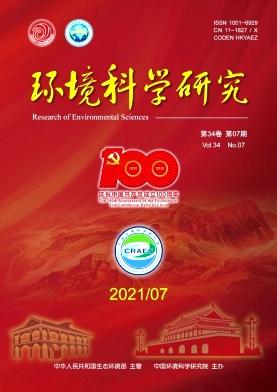Preliminary Study on Environmental and Climatic Characteristics of Historical Infectious Diseases and Some Thoughts of COVID-19
Q2 Environmental Science
引用次数: 2
Abstract
The outbreak and pandemic of COVID-19 pose a serious threat to the safety of human society and examine the ability of public health care resources around the world to deal with the large sudden infectious diseases A review on the environmental and climatic characteristics related to historical infectious diseases will shed immediate light on the scientific research and control of COVID-19 Our results show that: (1) Historically, outbreaks of human-to-human coronavirus and orthomyxoviridae infectious diseases mainly occurred in the subtropical monsoon climate of the northern hemisphere in the winter and spring, while the outbreaks of flaviridae infectious diseases mostly occurred in tropical regions in hot and rainy summer and autumn (2) Global warming and extreme weather may exacerbate the outbreak and spread of infectious diseases (3) The impact of human activities on the ecosystem balance forces the habitat migration of virus hosts and the aggregation of different virus hosts, increasing the probability of virus mutation and the risk of infectious disease outbreaks The lessons from historical outbreak of infectious diseases suggest that suitable climate factors might be conducive to the outbreak and epidemics, while the outbreaks in tropical countries also indicate that it is necessary to scrutinize the roles of climate, environmental conditions and ecological factors in the global wave of COVID-19 Our study provides some useful insights for the prevention and control of COVID-19 plague and other potential pandemics in the future © 2020, Editorial Board, Research of Environmental Sciences All right reserved历史传染病环境气候特征初探及对新冠肺炎疫情的几点思考
新冠肺炎疫情的爆发和大流行对人类社会安全构成严重威胁,也考验着全球公共卫生资源应对大型突发性传染病的能力。回顾历史传染病相关的环境和气候特征,将对新冠肺炎疫情的科学研究和控制起到直接的指导作用。(1)历史上人与人之间的冠状病毒和正粘病毒科传染病暴发主要发生在北半球亚热带季风气候的冬春季节;而黄病毒科传染病的暴发多发生在炎热多雨的夏季和秋季的热带地区(2)全球变暖和极端天气可能加剧传染病的暴发和传播(3)人类活动对生态系统平衡的影响迫使病毒宿主的栖息地迁移和不同病毒宿主的聚集;历史上传染病爆发的教训表明,适当的气候因素可能有利于爆发和流行,而热带国家的爆发也表明,有必要仔细审查气候的作用。我们的研究为未来疫情防控提供了一些有用的见解©2020,编委会,《环境科学研究》版权所有
本文章由计算机程序翻译,如有差异,请以英文原文为准。
求助全文
约1分钟内获得全文
求助全文
来源期刊

环境科学研究
Environmental Science-Environmental Science (miscellaneous)
CiteScore
3.80
自引率
0.00%
发文量
6496
期刊介绍:
 求助内容:
求助内容: 应助结果提醒方式:
应助结果提醒方式:


